At first glance, the syringes of murky water don’t seem to show much. But new technology can detect dozens, if not hundreds, of species from these samples extracted from rivers and lakes throughout Myanmar.
Earlier this year, a team of mostly Myanmar scientists working for the global conservation non-profit, World Wide Fund for Nature, better known as WWF, collected water samples from the northern tip of Myanmar’s Kachin State down to the Irrawaddy Delta for a baseline biodiversity study. Using new environmental DNA technology at this scale, it was the first study of its kind in the country.
Early results raised hopes and cast fears for Myanmar’s ‘underwater worlds.’
The survey confirmed the continued presence of more than 400 species, including the critically-endangered Irrawaddy dolphin. The study also identified the existence of long-finned eel and helicopter catfish, giving researchers hope for future conservation of the species.
However, threats to Myanmar’s aquatic biodiversity, including industrial pollution and invasive species, were also found to be more widespread than previously thought.
The results were never meant to be published, said Pyi Soe Aung, the conservation director at WWF-Myanmar. But the spread of threats tipped the scales, prompting Pyi Soe Aung and his colleagues not only to go public, but to include their names in the study as well.
The latter was a rare decision given the insecurity created by the February 2021 military coup. In the nearly two years since the overthrow, the junta’s violent crackdowns have sometimes targeted environmental activists for their watchdog work which often criticised the junta.
“It is very risky for us to mention our names and promote this research, but on the other hand, we want to highlight the importance of protecting these species,” said Pyi Soe Aung.
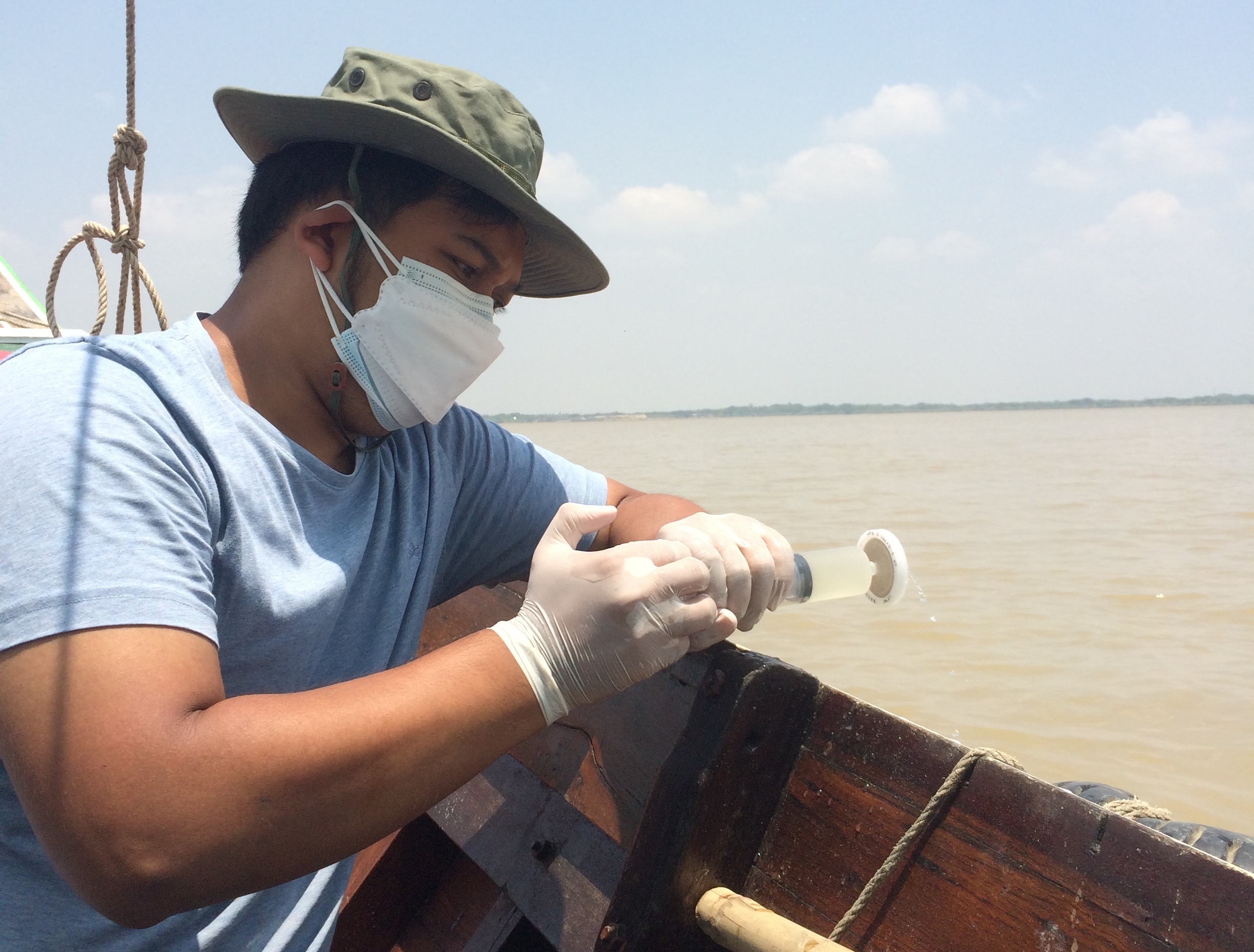
To mitigate the risks and prioritise the science, the study avoided highlighting anything that might be politically sensitive, despite widespread demands from the Myanmar public that international organisations in the country speak out against the junta, or operate underground so as to avoid engaging the regime in any way.
“There are risks to using our names in the research, but credibility is important when we talk about conservation. We want to highlight the importance of protecting these species,” said Pyi Soe Aung, adding that the problems identified in the survey were truly global in nature. “From an ecological point of view, there is a tipping point and once this point is reached, you can never return.”
Kyaw Ye Htet, an environmental activist who founded the Myanmar Climate Strike, a protest movement, agreed that the threat was existential. “If we don’t solve this collectively, we will go into extinction,” he said. “This is hell for everyone – it is not just a political or social issue, it is a big threat to the human species.”
Game-changing tech
As they move through water, fish shed DNA in different forms, from scales to waste, that can linger for weeks. By using eDNA technology with specialised filters, water samples with these remnants can reveal a full picture of the species in a given area.
Pyi Soe Aung said the technology is being pioneered across 35 sites in the Greater Mekong – a region that includes Myanmar, Thailand, Laos, Cambodia, Vietnam and parts of China – but particularly in Laos and Thailand. Though conservationists in Cambodia have used eDNA to find and conserve critically endangered crocodiles.
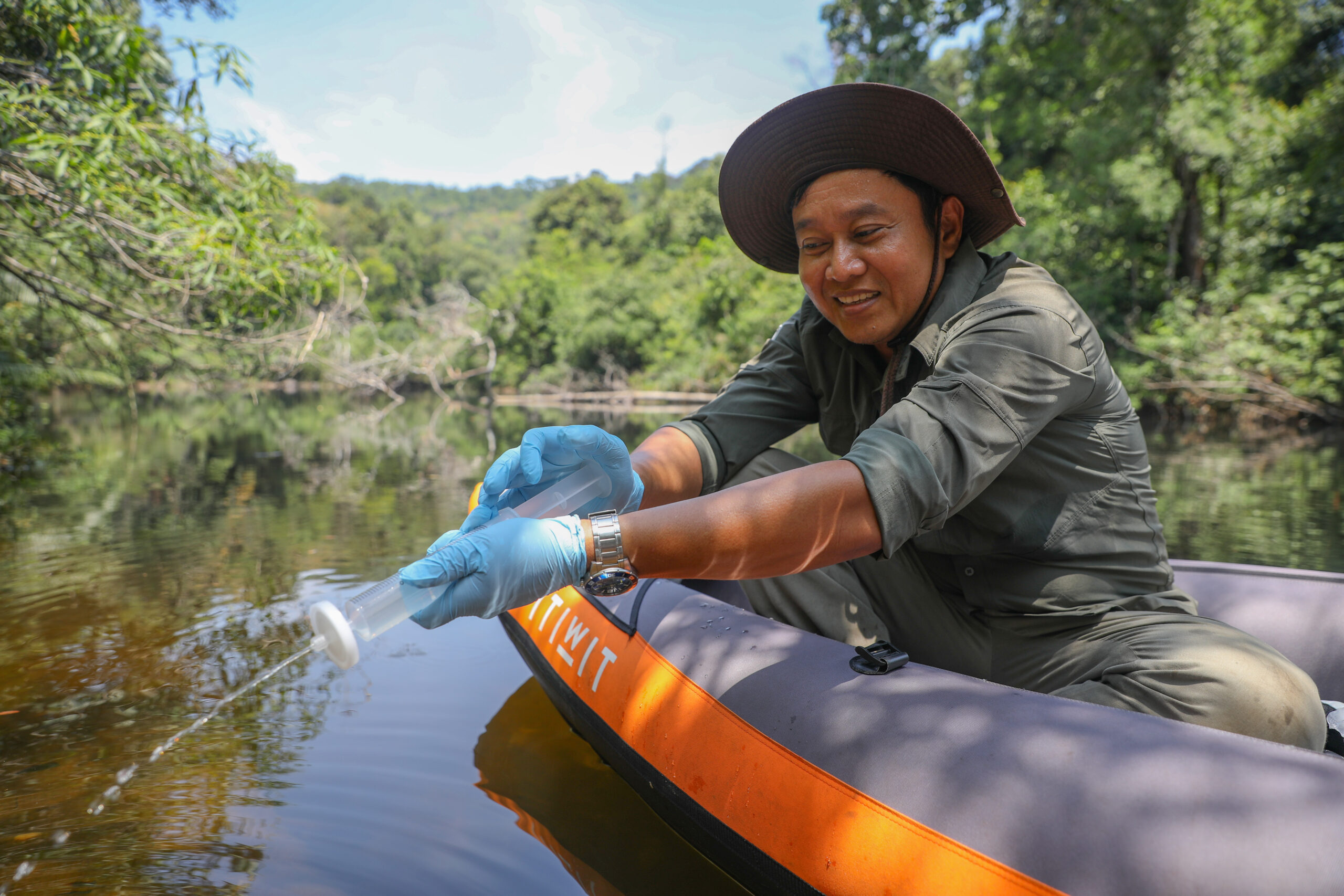
WWF-Myanmar partnered with NatureMetrics, a United Kingdom-based lab, to analyse the samples. Benjamin Barca, head of conservation for the lab, believes eDNA is a game-changer for conservation.
“In the past, we would approach a body of water with a mix of methods. Most of these are manual, practical methods and most of them are quite invasive,” Barca said, citing netting traps and electro-fishing.
Manual methods also require longer periods of preparation and larger teams of researchers. Especially in conflict-torn countries such as Myanmar, where the risk of field work is already high. But using eDNA reduces risks for both scientists and ecosystems, Barca said.
Thadoe Wai, a freshwater ecologist with WWF-Myanmar, worked with local partners throughout the country to collect the water samples. He said the breadth of samples, combined with the new technology, allowed a far more detailed picture of Myanmar’s aquatic wildlife to emerge.
“There haven’t been many DNA collections or much cataloguing of native aquatic species in Myanmar before,” Thadoe Wai wrote in the report. “We had instances where DNA showed up that we can identify down to the family level, but not to specify what species it was.”
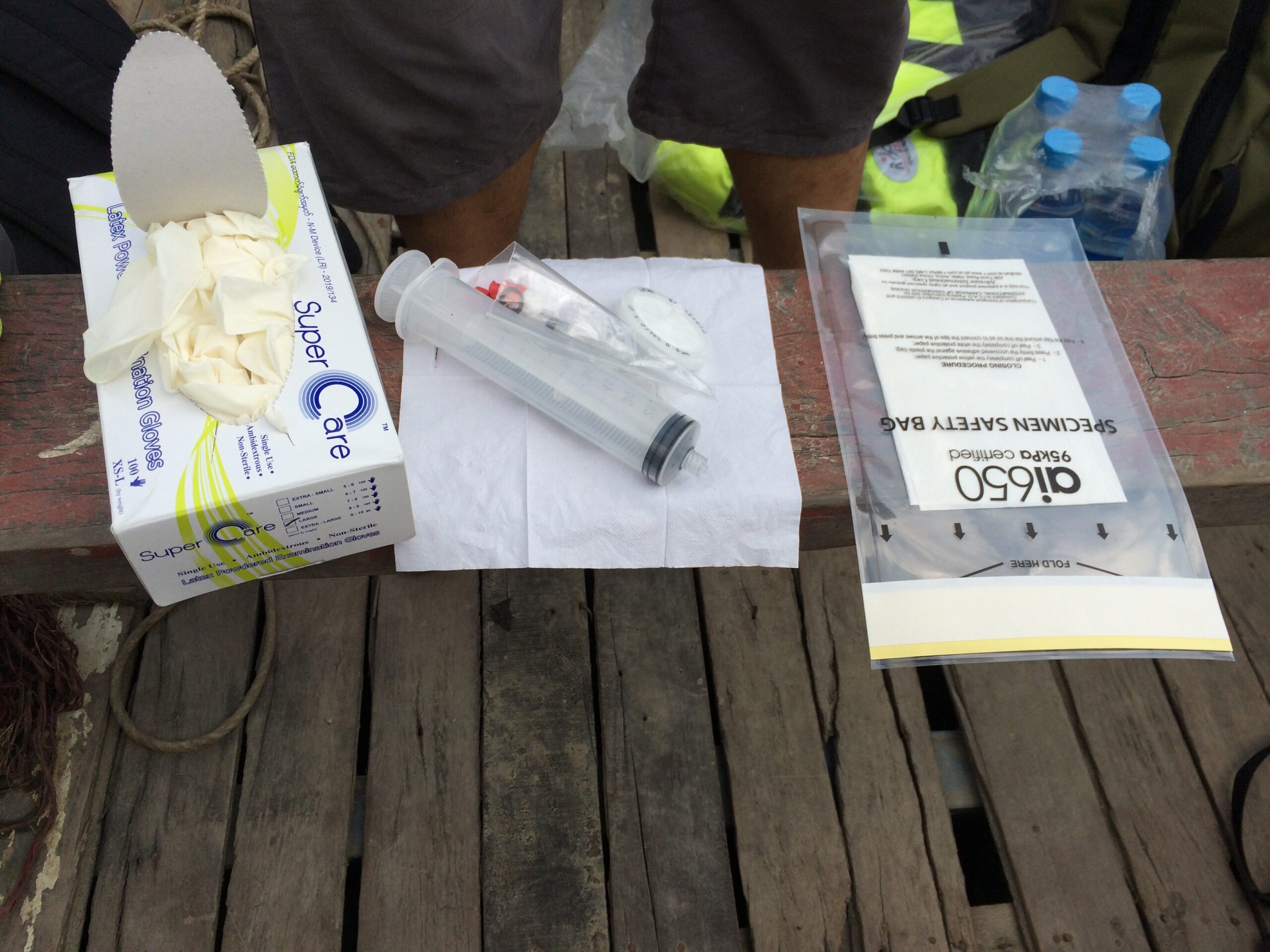
“There’s a good chance that some of that DNA comes from species that are as yet undescribed by science,” Thadoe Wai said. “That’s why we must protect the remaining secrets of these underwater worlds before we can fully understand them.”
Species at risk
The findings also put the threats to aquatic wildlife into sharp focus, and given the post-coup crisis, these threats are likely to worsen. As of early 5 December, security forces have killed more than 2,560 civilians and detained at least 16,520 people, often on trumped up charges, according to the Assistance Association for Political Prisoners.
“We can see which organisms are sharing a space, identify impacts that may manifest from pressures like pollution or invasive species, where they prefer to stay, the places they’re avoiding,” Thadoe Wai wrote. “If pollution or any other threat were to be present in those areas, these endemic species are at high risk of being endangered… or worse.”
The survey found fewer fish species in water bodies close to cities. Thadoe Wai believes this is due to pollution, which has likely increased over the last two years.
In the aftermath of the coup, public services such as garbage collection were suspended as the new junta struggled to govern. As more plastic and solid waste filled streets and entered lakes and rivers, threatened species were put under even greater stress, according to Pyi Soe Aung.
Another major threat flagged by the survey was the spread of the invasive Nile tilapia. While long known to threaten native species such as the hilsa, researchers found that, likely due to the tilapia and other possible factors such as overfishing, hilsa had been wiped out in certain areas of the country. This is cause for alarm because the fish is not only prized in Myanmar as a source of food and a cultural symbol, but is also economically valuable. A 2015 study indicated that Myanmar accounts for 15 percent of the global hilsa catch.
“Nile tilapia has been a long-time issue in Myanmar, but we didn’t have proper assessments,” said Pyi Soe Aung. “In the past we knew that there were Nile tilapia in some regions, but these results show that they have been distributed across the country, which is more concerning. We thought that they would be in Yangon and in Inle Lake but no – they are everywhere.”
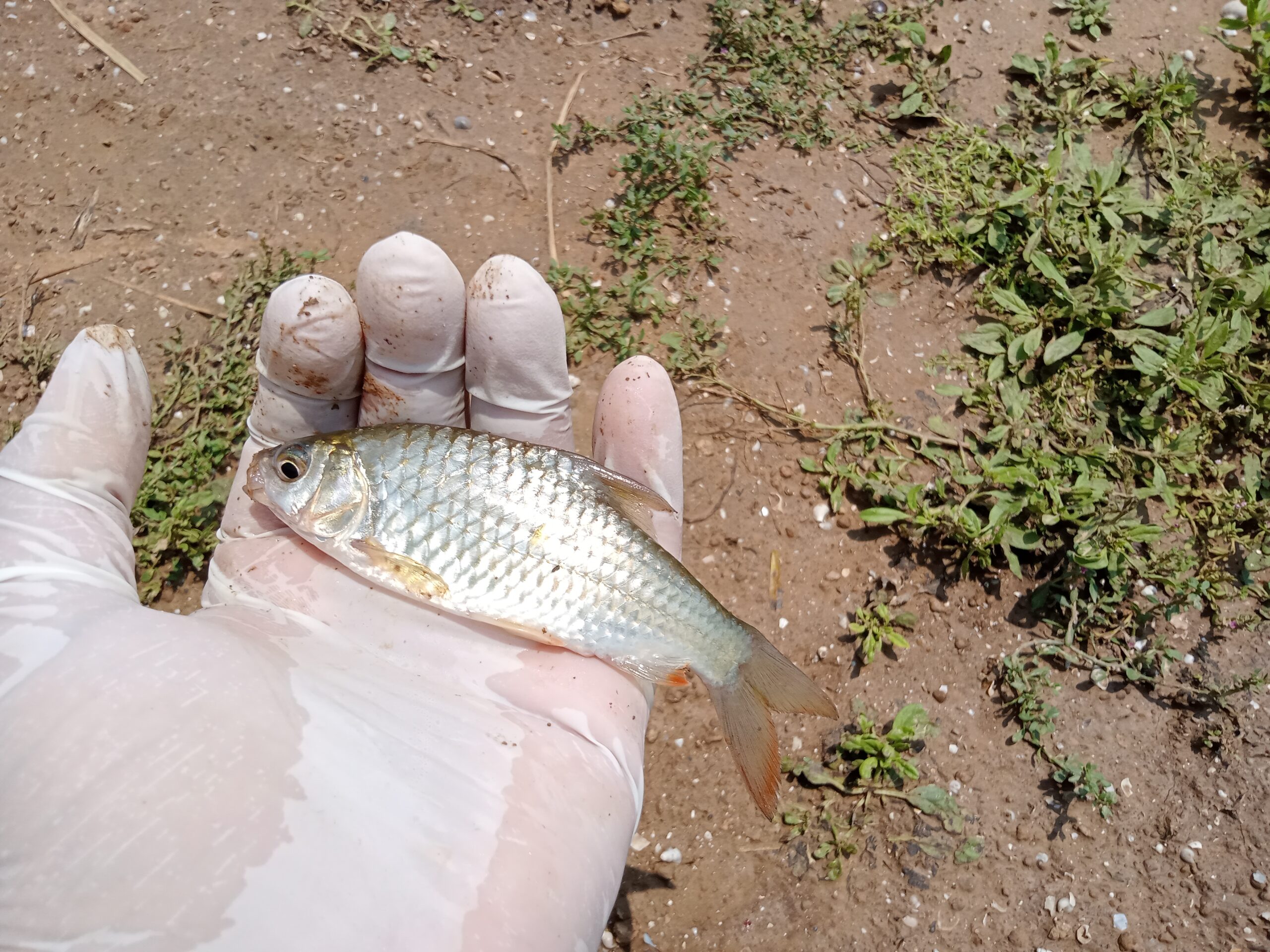
The threat to Myanmar’s fisheries from Nile tilapia is man-made. Tilapia farms were introduced to the country in the 1990s to boost exports. These plans failed, partly due to international sanctions on Myanmar and burdensome taxes imposed by a previous junta, leading to a supply surplus and eventually causing domestic demand to rise. Not long after, Nile tilapia became a staple in local restaurants across the country.
Experts say the fish is now an essential source of protein in the national diet, and Myanmar is far from unique in this respect.
“Around the world, tilapia is introduced as an aquaculture commodity. It is a consequence of global food needs and we cannot refuse [it],” said Veryl Hasan, a lecturer at Indonesia’s Airlangga University, who has studied the expansion of Nile tilapia across the archipelago.
Trouble began in 2008, when a large number of tilapia escaped from fish farms into the Irrawaddy Delta when they were flooded by the storm surge generated by Cyclone Nargis. The population of Nile tilapia, which reproduces 30 percent faster than other strains of tilapia, boomed in the wild, pushing out native fish such as the hilsa.
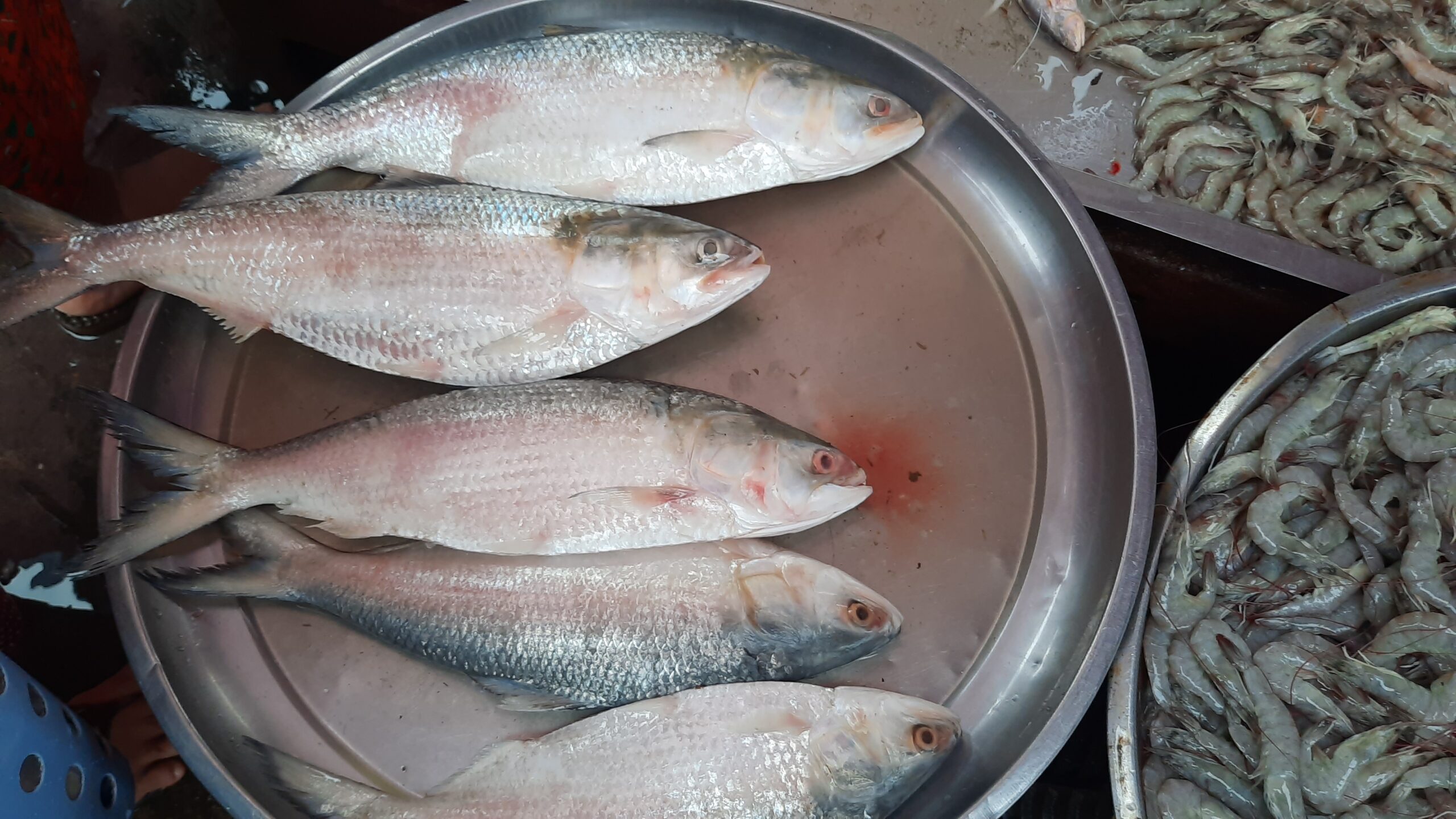
“If you fish for the whole day for other fish, the total catch you get will be equivalent to one hilsa,” said Pyi Soe Aung. “It’s expensive because people love to eat it – it is part of our culture and our traditional food.”
‘We need good governance’
Although environmental regulation has always been weak in Myanmar, it has deteriorated further since the coup, exacerbating threats to Myanmar’s biodiversity. But in the long run, experts say the dangers can only be addressed by legitimate, accountable governance
The junta’s ministry of environmental conservation and natural resources is led by Khin Maung Yi, who has been sanctioned by the United States for profiting from Myanmar’s natural resources. The regime has dabbled in conservation, mostly by designating select forests as protected areas in conflict-torn regions such as Sagaing and Magway. On 1 December, junta-run media said efforts were underway to breed hilsa, but with a focus on export revenue rather than conservation.
Activist Kyaw Ye Htet said these efforts would do little to help the environment and were likely disingenuous.
“I believe what the military junta is doing is nonsense,” he said. “When we say environmental conservation, it isn’t just planting a tree. They are the ones who have exploited the natural resources of the country for decades, so how can they help in a real way to solve the issue?”
The National Unity Government, a parallel civilian led administration formed by deposed lawmakers in April last year, has a natural resources and environmental conservation ministry. However, with only a limited ability to govern territory and a war against the military to fight, its priorities lie elsewhere.
The NUG told Frontier in June that 90 percent of its budget had gone to the armed struggle. Its deputy Environmental Minister Khun Bedu said only a “very small” amount was being allocated to conservation, but he thought this made sense given the circumstances.
“For the [ministry] budget we struggle – we do not have many donors supporting us. But the NUG agrees that the budget going to defence is acceptable,” Khun Bedu said.
In fact, Khun Bedu’s own ministerial role takes a back seat to his post as the chairperson of one of the largest resistance groups to have formed since the coup, the Karenni Nationalities Defence Force, which operates in Kayah State and neighbouring areas.
With no previous experience working on the environment, Khun Bedu, who is ethnic Kayan, admitted that he was named deputy minister based on “what positions were available.” His appointment came at a time when the NUG was trying to assemble an ethnically diverse cabinet and also build bridges with ethnic armed groups.
Although WWF has planned more surveys that could shed additional light on Myanmar’s environmental plight, Kyaw Ye Htet thinks little can change until the political crisis is resolved.
“People’s houses are being burned down and they are fleeing their villages, so in this scenario how can they take part in environmental conservation and climate action?” he said, noting that environmentalists can do little amid this level of oppression and raging conflict.
“I don’t see a possibility for improvement in the foreseeable future,” Kyaw Ye Htet said. “It will take time to overthrow the junta and set up genuine democratic governance and we need good governance to ensure environmental conservation.”
This story was produced in collaboration with Frontier Myanmar


